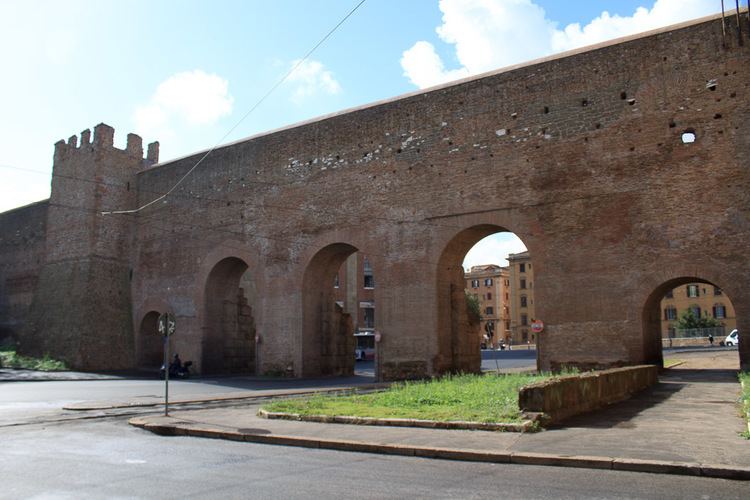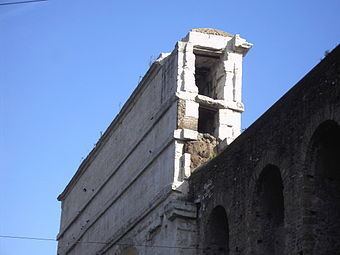 | ||
Similar Aqua Claudia, Aqua Tepula, Aqua Marcia, Aqua Julia, Aqua Appia | ||
Aqua Anio Novus (Latin for "New Anio aqueduct") is an aqueduct of Rome. Like the Aqua Claudia, it was begun by emperor Caligula in 38 AD and completed in 52 AD by Claudius, who dedicated them both on August 1. Together with the Aqua Anio Vetus, Aqua Marcia and Aqua Claudia, it is regarded as one of the "four great aqueducts of Rome."

Overview
The Aqua Anio Novus was the highest in level of all the aqueducts that came into ancient Rome. The aqueduct was initiated by the emperor Caligula and completed by Claudius. It was built of tuff and brick. After the water was prone to be turbid, Trajan made use of the two uppermost of the three lakes formed by Nero for the adornment of his villa at Subiaco thus lengthening the aqueduct to 58 miles and 700 paces. The lakes were created by dams in the river, and were the tallest of any built by the Romans. They were swept away by the river in the Medieval period. Its volume at the intake was 196,627 cubic metres (6,943,800 cu ft) in 24 hours. From its filtering tank near the seventh milestone of the Via Latina it was carried on the lofty arches of the Aqua Claudia, in a channel immediately superposed on the latter.

Before the reforms, the aqueduct was freely used to supply the deficiencies of other aqueducts, and, being turbid, rendered them impure. It is described in some detail by Frontinus in his work published in the later first century, De aquaeductu.

